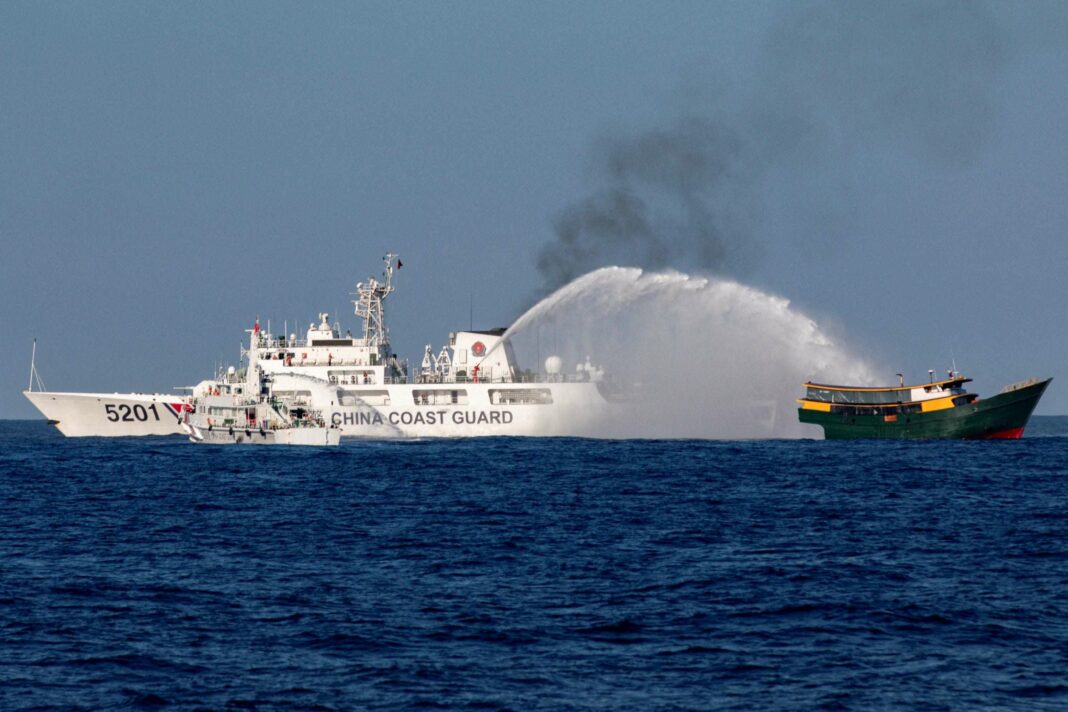Over the past eighteen months, the Philippines has launched a transparency initiative to combat China’s assertiveness in the South China Sea, documenting aggressive incidents involving Chinese forces. Commodore Jay Tarriela leads this effort, aiming to educate the public and showcase China’s actions globally. Despite international support, challenges persist as China increases its aggression. The Philippines is enhancing its Coast Guard capabilities with new ships from France and Japan while exploring joint patrols with allies to address maritime security issues.
For the past eighteen months, the Philippines has embarked on an ambitious transparency initiative in its ongoing struggle against China’s assertiveness in the South China Sea. Manila has taken a vocal stance, consistently unveiling China’s aggressive maneuvers. The Philippine Coast Guard has been proactive in documenting incidents, releasing videos that depict their vessels being forcibly displaced, rammed, or targeted with water cannons by Chinese forces.
In a shocking incident last June, a Philippine soldier suffered a severe injury, losing a finger when Chinese officials attacked Philippine rubber boats with knives and axes. Footage of this altercation at Ayungin Shoal quickly gained traction online.
China’s Illegitimate Claims Under Scrutiny
At the forefront of this transparency campaign is Commodore Jay Tarriela, serving as the spokesperson for the West Philippine Sea Transparency Office. The Philippines refers to this region of the South China Sea as the West Philippine Sea, asserting its right to the exclusive economic zone.
China, on the other hand, continues to assert its expansive claims over most of the South China Sea, defined by the controversial Nine-Dash Line. In 2016, an international arbitration tribunal ruled against China’s claims, stating they were not supported by contemporary maritime law—a verdict that Beijing has chosen to ignore, intensifying its pressure on neighboring coastal states, including Vietnam, Malaysia, Brunei, and particularly the Philippines.
As the transparency initiative enters its second year, Commodore Tarriela reflects on its effectiveness. “It has proven to be highly successful,” he asserts. “Our dual objectives are to educate the Philippine populace about the ongoing situation in our waters and foster national pride, while simultaneously showcasing China’s actions to the global community.” Increasingly, nations are denouncing China’s aggressive tactics in the West Philippine Sea and rallying behind the Philippines.
A testament to this growing support is the commitment from France to supply forty new ships for the Coast Guard in the coming years. This collaboration highlights the European Union’s recognition of the need to counteract China’s hostile behavior, as the implications of the South China Sea tensions extend beyond Asia to Europe as well.
In addition to the French vessels, the Philippines is set to receive five large ships from Japan, necessitating extensive personnel training. Since 2017, the Philippine Coast Guard has expanded significantly, projecting to reach 34,000 personnel by year-end, with around 4,000 new recruits annually. This growth will ensure adequate staffing for the incoming fleet, which will arrive incrementally over the next few years.
The Japanese ships are substantial, measuring 97 meters in length, although the Philippines currently operates only two similar vessels. However, Chinese ships are larger and more numerous. “We certainly can use more vessels,” Tarriela acknowledges, emphasizing that the Philippines must patrol not only the West Philippine Sea but also its vast maritime territory of 2.2 million square kilometers, which includes over 7,500 islands. Responsibilities extend to combating illegal fishing and smuggling, ensuring maritime safety, and conducting search and rescue missions.
Discussions are underway about potential joint patrols in the West Philippine Sea with Japanese or American Coast Guards to confront Chinese actions more decisively. Regular bilateral exercises with American and Japanese counterparts have been conducted, with last year’s collaboration including a trilateral training session. While the possibility of joint patrols remains uncertain, Tarriela views these efforts mainly as a strategy to address issues like smuggling and piracy, rather than solely targeting China.
Ongoing Chinese Aggressions
The transparency initiative has garnered recognition from numerous experts, particularly from the United States, as a model of how a relatively weaker nation can withstand Chinese pressure. Ray Powell, who leads a maritime security project at Stanford University, describes the strategy as a “game-changer,” enabling the Philippines to redefine its approach against China’s unlawful pressures.
However, criticism persists. In the time since the initiative’s inception, China has escalated its aggressive tactics and violence. Vincent Kyle Parada, a former Philippine Navy analyst, recently expressed concerns in an interview, suggesting that while Manila has received substantial rhetorical and diplomatic backing, military self-defense capabilities are crucial to counter China’s intensified pressure.
When asked if the transparency initiative can truly be deemed successful without altering China’s aggressive stance, Tarriela responds, “We never claimed that the initiative would resolve the issue of Chinese aggression. Our expectations were never that it would deter Xi Jinping from pursuing illegal actions in the West Philippine Sea.”
While some argue that the initiative has provoked increased Chinese hostility, Tarriela disagrees. He believes China’s heightened aggression is a response to testing the limits of international support for the Philippines, as glimpses of global criticism seep into the Chinese public despite censorship. “Xi Jinping does not want to appear weak to his own people,” he adds.
The Philippines has received support from Western nations, yet neighboring countries with similar claims in the South China Sea appear hesitant to openly align with Manila. “It is somewhat disheartening,” Tarriela admits, “to see President Ferdinand Marcos often standing alone in condemning China’s aggressive actions during ASEAN meetings. Nevertheless, it’s encouraging when other nations, like Vietnam, adopt our strategy, as evidenced by their public outcry in October when the Chinese Coast Guard violently attacked Vietnamese fishermen.”
